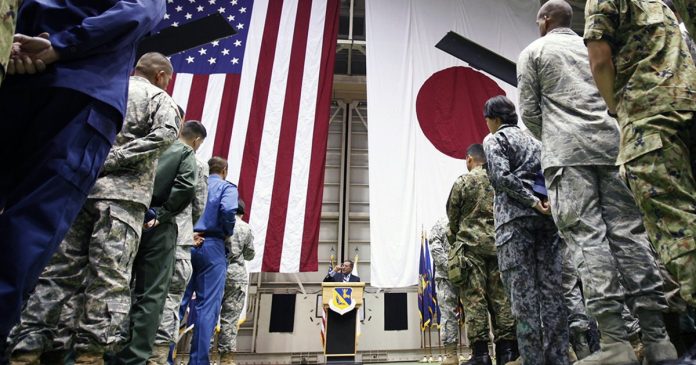US Defence Secretary Pete Hegseth has highlighted the importance of strengthening the US-Japan partnership in countering China’s growing military assertiveness. He emphasised that both countries must work together to boost their defence capabilities in the face of increasing regional threats.
Hegseth, currently on his first tour of Asia, emphasised the importance of both countries strengthening their military capabilities. This is crucial as China increases its military presence, and tensions rise over Taiwan.
“Japan is our indispensable partner in deterring Communist Chinese military seizures,” Hegseth said during talks with Japan’s Defence Minister, Gen Nakatani, in Tokyo. “The US is moving quickly to re-establish deterrence in this region and around the world.”
These comments aim to reassure Japan, which has expressed concerns over US engagement under President Trump’s “America First” policy. Japan is also worried about possible trade tariffs, which Trump has threatened to impose.
Strengthening military cooperation
The two sides agreed to accelerate the development of advanced missiles, such as the Advanced Medium-Range Air-to-Air Missile (MRAAM). They also discussed producing SM-6 surface-to-air missiles to address munitions shortages. Additionally, the ministers agreed to improve the maintenance of US warships and aircraft in Japan to support both Japanese and US defence industries.
In July, Japan and the US decided to enhance command and control for both Japanese military forces and US troops in Japan. This shift under the Biden administration aims to improve joint operational capabilities. Japan currently hosts over 50,000 US troops.
Last week, Japan launched the Japan Joint Operations Command (JJOC). Its task is to coordinate Japan’s Ground, Maritime, and Air Self-Defence Forces. This move will strengthen Japan’s ability to respond to contingencies and improve cooperation with the US.
Upgrading US forces in Japan
Hegseth confirmed the upgrade of US Forces Japan. A new unified operational commander will oversee joint operations. This commander will work alongside Japanese counterparts, helping to speed up and improve joint efforts.
Hegseth explained that reorganising US forces in Japan is a preparation for potential conflicts. Both the US and Japan want peace but must remain prepared. Japanese defence officials do not expect any major changes to their responsibilities or an increase in US troops in Japan.
Hegseth and Nakatani also agreed to boost Japan’s defence posture on the southwestern islands. These islands are strategically located in disputed areas of the East China Sea and near Taiwan. Strengthening their defences will enhance deterrence against China.
Deterring threats in the Indo-Pacific
“We need a robust, ready, and credible deterrence in the Indo-Pacific, including across the Taiwan Strait,” Hegseth stated. “Japan would be at the frontlines in any contingency we may face in the western Pacific.”
China claims Taiwan as its own territory. The US is committed under a 1979 law to supply Taiwan with military hardware to deter any attempts at seizure. Arms sales to Taiwan have been a long-standing point of tension between the US and China.
Honouring the past and strengthening alliances
On Saturday, Hegseth joined the US-Japan joint memorial service to honour those who died in the Battle of Iwo Jima. This marked the 80th anniversary of the end of one of World War II’s most intense battles. Hegseth praised the enduring strength of the alliance between the two nations, once adversaries.
Before arriving in Japan, Hegseth visited the Philippines. He reaffirmed the US’s commitment to strengthening ties with the Southeast Asian country, which faces maritime disputes with China.
